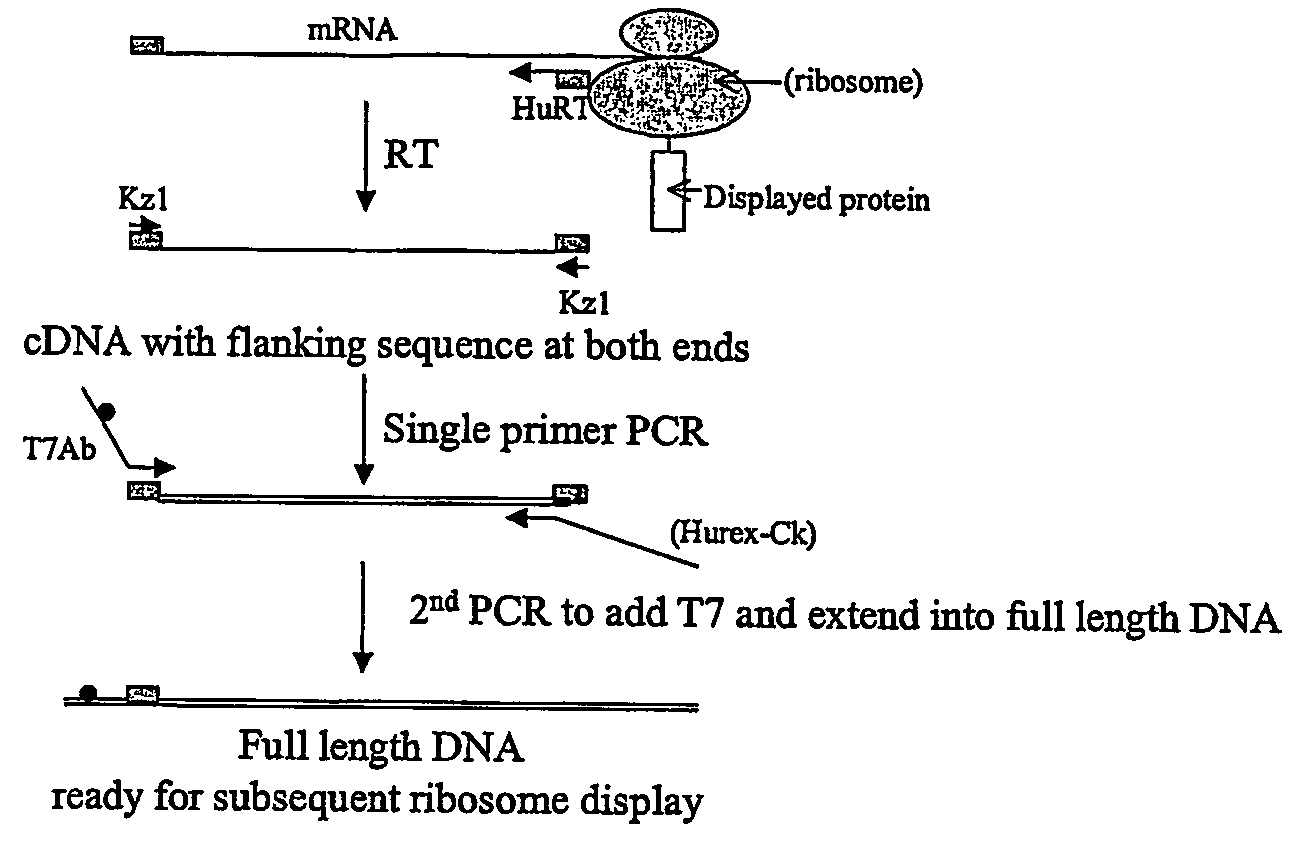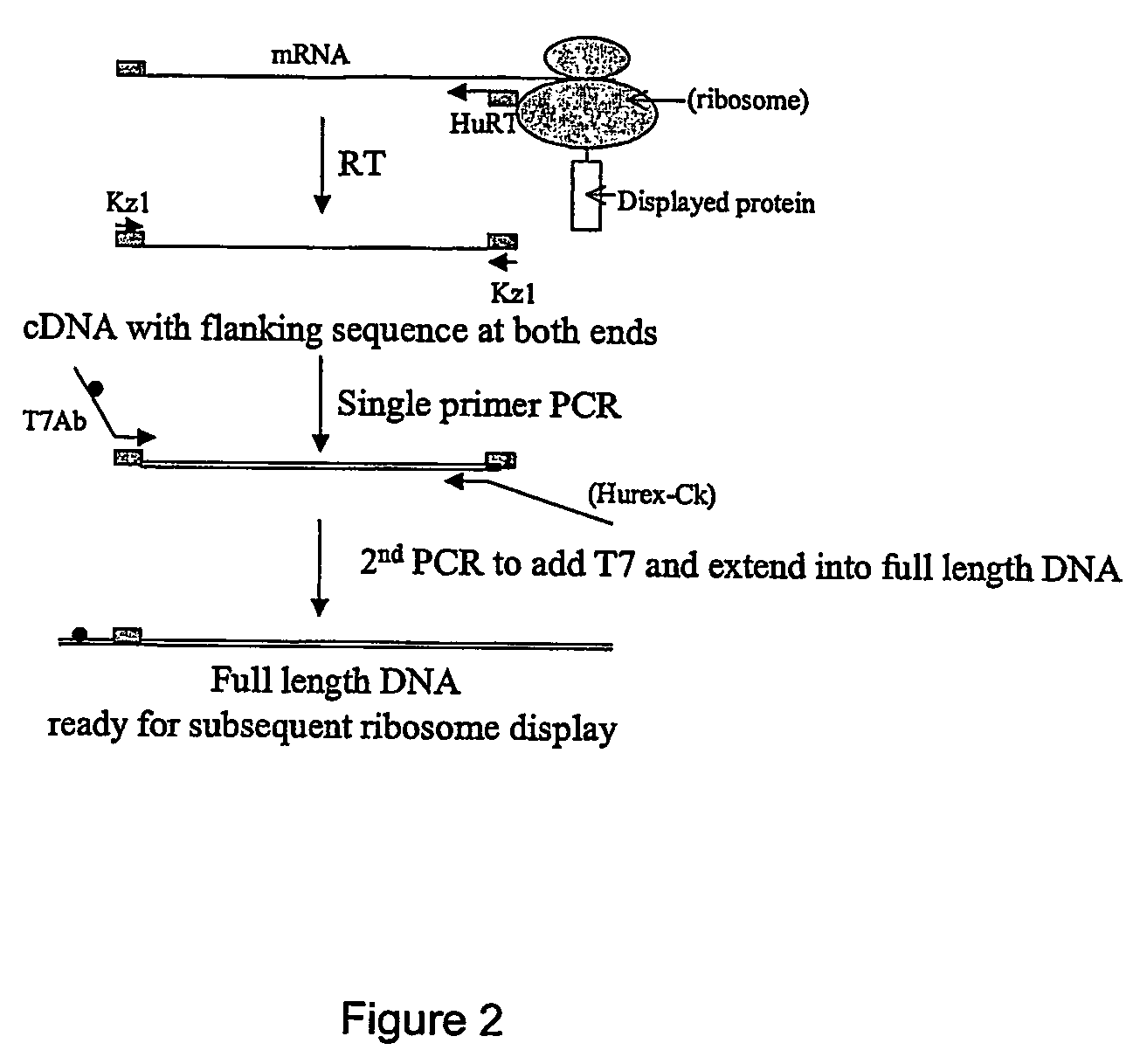Methods for recovery of DNA from mRNA in ribosome display complexes
a ribosome display complex and dna technology, applied in the field of dna recovery, can solve the problems of difficult or even impossible to recover by traditional rt-pcr methods, artificial errors, etc., and achieve automatic ribosome display, avoid time-consuming and laborious identification procedures, and easy conversion
- Summary
- Abstract
- Description
- Claims
- Application Information
AI Technical Summary
Benefits of technology
Problems solved by technology
Method used
Image
Examples
example 2
Automation of the Method
[0123]Ribosome display can performed by the following procedure using a robot such as Tecan miniprep 75. To each well of a microtitre plate, 10 ul of PCR library is added, this is followed by addition of 40 ul of TNT mixture containing 0.02 mM methionine and 1 mM Mg acetate; incubation is performed at 30° C. for 1 hr; then to each well is added 20 ul of a mixture containing 7 μl of 10× DNase I buffer and 100U DNase I. The reaction mixture is incubated at 30° C. for 20 min; then 70 μl of cold 2× dilution buffer is added to each well. The mixture (140 ul) is then transferred to the wells of Nucleolink™ strips (NUNC) coated with ligand(s) and incubated at 4° C. for 2 hrs, with gentle shaking, to permit binding of the PRM complex with the immobilised ligand. The wells are then washes 5 times using washing buffer, then two times using sterile distilled H2O.
[0124]For the reverse transcription reaction, 12 ul of reverse transcription mix 1 is added to each well and ...
PUM
| Property | Measurement | Unit |
|---|---|---|
| temperature | aaaaa | aaaaa |
| temperature | aaaaa | aaaaa |
| temperature | aaaaa | aaaaa |
Abstract
Description
Claims
Application Information
 Login to View More
Login to View More - R&D
- Intellectual Property
- Life Sciences
- Materials
- Tech Scout
- Unparalleled Data Quality
- Higher Quality Content
- 60% Fewer Hallucinations
Browse by: Latest US Patents, China's latest patents, Technical Efficacy Thesaurus, Application Domain, Technology Topic, Popular Technical Reports.
© 2025 PatSnap. All rights reserved.Legal|Privacy policy|Modern Slavery Act Transparency Statement|Sitemap|About US| Contact US: help@patsnap.com



